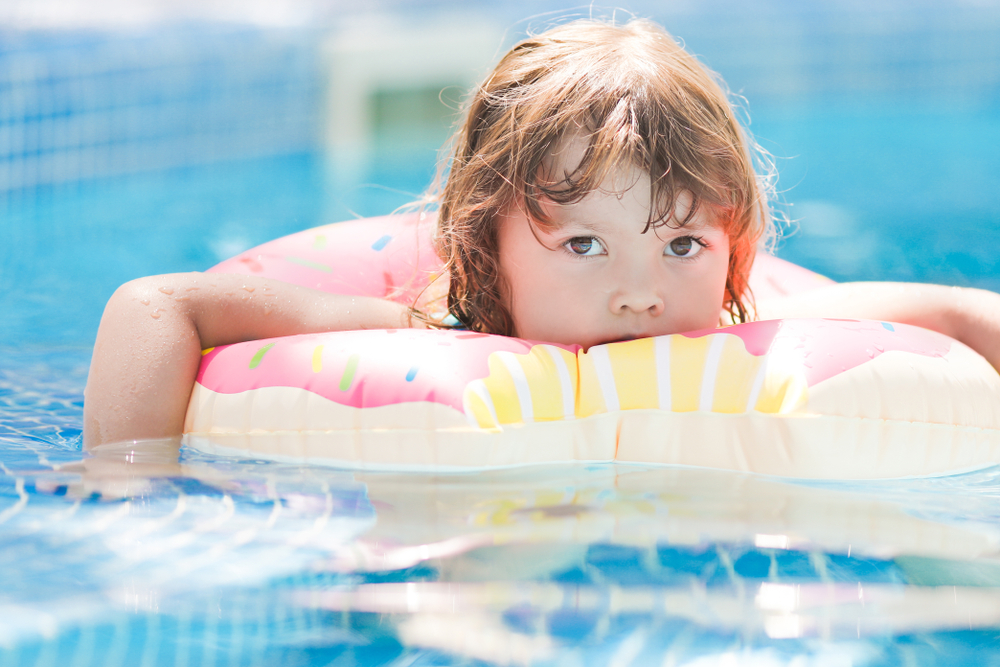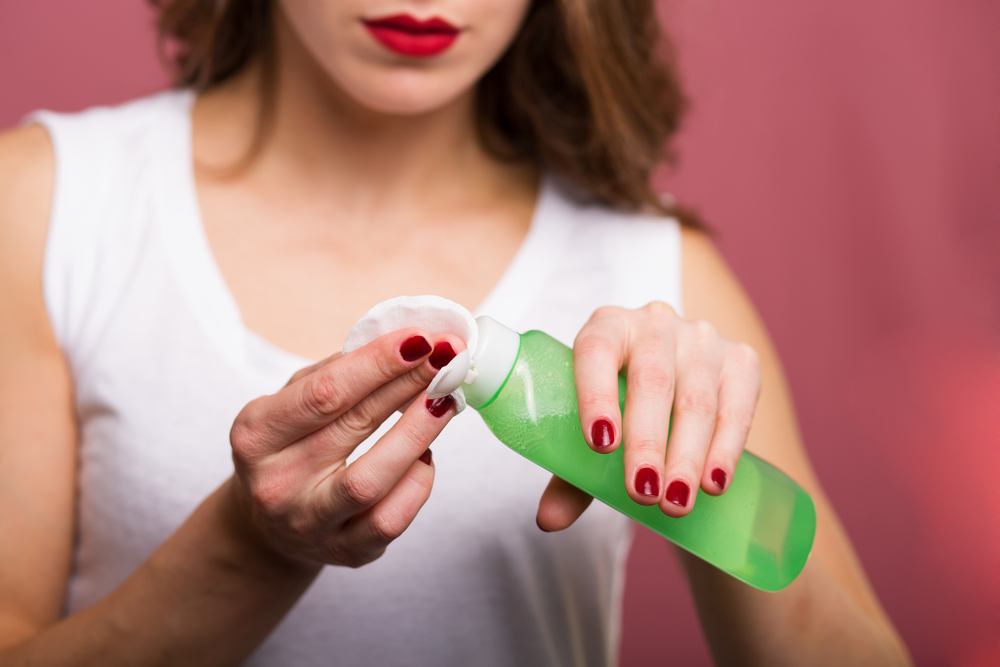- A swimming pool rash typically occurs when the disinfectants in a pool break down.
- To safely enjoy the benefits of pool life you need to ensure that the water is free of bacterial contamination.
- Rashes can also occur from swimming in fresh water, sea water or soaking in a hot tub.
Pools are synonymous with sunshine, vacations and the dog days of summer. They’re refreshing sanctuaries that offer relief from the seasonal heat. However, to safely enjoy the benefits of pool life, you need to ensure that the pool water is free of bacterial contamination and does not increase your risk of getting a rash. We outline common types of swimming rashes, how to treat them and the measures you should take to avoid them.
What is a swim rash?
A swim rash is a skin irritation caused by bacterial contamination in a swimming pool Pool rashes are not uncommon occurrences and skin irritation may also occur from swimming in fresh water, sea water or soaking in a hot tub. Swimming-related rashes include swimming pool rash, hot tub rash, chlorine rash and swimmer’s itch.
What is swimming pool rash?
A swimming pool rash typically occurs when the disinfectants in a pool break down, exposing swimmers to the Pseudomonas aeruginosa bacteria.
Symptoms
Denise R. Fuller, an esthetician and the founder of NASNPRO, explains that a pool rash typically occurs 12-48 hours after a person has been swimming. “The symptoms include small red bumps on the skin, blisters and itching that affects the arms, legs, torso and/or the entire body.”
Treatment
Without treatment, a swimming pool rash will usually disappear on its own within 7-10 days. It’s important to avoid scratching as this is likely to aggravate the condition. If the skin becomes infected, consult your physician for advice and treatment. According to Parents.com over-the-counter antihistamines and soothing anti-itch products, such as colloidal oatmeal or menthol cream, might help ease the itching. Bathing in water with baking soda may also help soothe the skin.
Prevention
Proper pool maintenance is crucial to kill harmful bacteria. Before you dive into a pool, make sure that the water is not murky. That means you should be able to see the metal drain at the bottom of the pool. As an added precaution, remember to shower with antibacterial soap after exiting a pool to protect your skin.
What is hot tub rash?
Much like a swimming pool the chemical disinfectants in hot tubs and whirlpools require special monitoring as the warmer water hastens the breakdown of chlorine, which then triggers the growth of bacteria.
Symptoms
An itchy skin rash generally appears 12-48 hours after exposure to the P. aeruginosa bacteria. In addition to the outbreak, symptoms can also include mild fever, headache, sore throat and fatigue. The bacterium can also cause eye, ear, nose and throat irritations as well as urinary tract infections.
Treatment
Much like a pool rash, you need to avoid scratching the itch. To treat the rash, try a warm compress using a clean washcloth soaked in warm water and white vinegar. Press the compress against the rash three to six times daily for approximately ten minutes.
Prevention
The rules that apply to the maintenance of swimming pools also apply to hot tubs. And because warm water breaks down the chemical disinfectants in the water more rapidly, hot tub users need to be extra vigilant about the quality of the water in which they submerge themselves.
What is chlorine rash?
According to the American College of Allergy, Asthma, & Immunology, people who use swimming pools very frequently are generally the most likely to develop a chlorine rash as pool chemicals bond to hair and skin and do not easily wash away. In this case, the rash is not caused by bacteria but by chlorine build up that continues to irritate the skin even after a person has left the pool.
According to New York City dermatologist, Dr. Bobby Buka, both saltwater and freshwater pools contain chlorine, “Which can cause irritant contact dermatitis, especially if chlorine levels are high or on sunnier days.” Interestingly, more UV rays translates to higher levels of free chloride ion levels, informs Dr. Buka.
Fellow New York City dermatologist, Dr. Kristina Goldenberg, notes that many people have the misconception that water moisturizes the skin, “But it does the opposite. It dries the skin out,” she warns. “In its mild form, irritant dermatitis shows up as noticeably dry skin. If you’re swimming for long stretches in a pool, then you may develop an itchy, scaly rash in the crook of the arm or crux of the armpit where chlorine can accumulate and cause irritation,” explains Dr. Buka.
Symptoms
The symptoms of a chlorine rash can begin immediately to within hours of chlorine exposure and may include extreme itching, small bumps on the skin and patches of itchy rash.
Treatment
Dr. Buka says that it’s important to know that dehydrated skin is compromised skin, which means it’s also more susceptible to an allergic reaction. “Applying a ceramide-based moisturizer to the surface of the skin allows the skin’s repair function to recover and restore adequate hydration (and barrier protection!) to the dermis.”
He notes that over-the-counter anti-itch medication or lotion can help relieve some of the itchy dryness that accompanies the rash. “Avoid lotions that are highly perfumed, as they can add to the potential irritation from chlorine. A soothing Aveeno Oatmeal bath can reduce itching and inflammation. Aloe vera gel or freshly crushed aloe vera is a topical treatment that can help soothe the itchiness,” he advises. If the symptoms do not ease or you experience dizziness or any breathing problems, seek immediate medical attention.
Prevention
Take a bath or shower before and after chlorine exposure. If you apply lotions to skin that has chlorine present, it’s only likely to irritate it more. Try applying petroleum jelly, such as Vaseline, to areas that are irritated before going into a pool. This will act as a barrier between your skin and the water.
What is swimmer’s itch?
Swimmer’s itch occurs in lakes, ponds, rivers and oceans where the water contains parasites left behind by birds and mammals.
Symptoms
This itchy rash appears on the exposed parts of the skin and may manifest within minutes or days after contact with infested water.
Treatment
Typically swimmer’s itch clears up within a week. In the meantime, you can control the itching with over-the-counter antihistamines or anti-itch creams containing calamine. If the itching is severe, your doctor may recommend prescription medication.
Prevention
To prevent swimmer’s itch, avoid swimming in shallow marshy areas, especially if there are snails as they carry the skin rash causing parasite that birds and mammals have released. Remember to shower or at least towel-dry the skin immediately after swimming.
» Learn more about other summer rashes that can be irritating your skin, including heat rash and sea lice rash
Pool maintenance tips
Here are some handy tips for pool and hot tub maintenance that will help you keep your body of water safe for swimming and soaking.
For a pristine pool:
- Skim your pool daily and scrub the sides and bottom once a week to prevent algae build up.
- Clean your filter once a week by lifting out the filter basket and removing any debris. Replace the filter piping once a month.
- Maintain proper chemical levels. This is an essential facet of pool maintenance as water that is not properly balanced can turn your pool into a breeding ground for bacteria. So, test the water at least once a week.
- Don’t be afraid to ‘shock’ your pool when necessary. Shocking refers to drastically raising the chlorine levels for a short period to kill bacteria. It’s done by adding three to five times the standard amount of chlorine or other chemical sanitizers to the pool and slowly re-adding water.
As mentioned, if your pool is heated, you need to be extra vigilant as warm water breaks down pool disinfectants more rapidly.
For proper hot tub maintenance:
- Circulate your hot tub. Your hot tub circulates water while it’s running. So, turn it on for 15-20 minutes to circulate water through the cartridge filters at least once a day, if not twice.
- Keep your hot tub clean, especially the shell and filters. Clean and drain your hot tub every 3-4 months – and more often if you use it frequently.
- Monitor your chemical balance. A clean hot tub makes dealing with the the water chemistry much easier. Because you’re dealing with a much smaller body of water than a swimming pool and the water tends to be hot, monitoring the chemical balance is vital.
Swim safe and rash free
Follow our handy tips to ensure a fun and rash-free summer in the water. If you should fall prey to swimmers rash, watch for symptoms and know that there are treatments you can try. The symptoms of pool, hot tub and chlorine rashes as well as swimmers itch typically disappear within a few days. To relieve the accompanying dryness or itchiness, over-the-counter anti-itch medications can provide relief. However, if the symptoms do not ease within a few days, you should seek medical attention.









